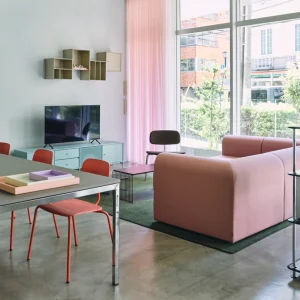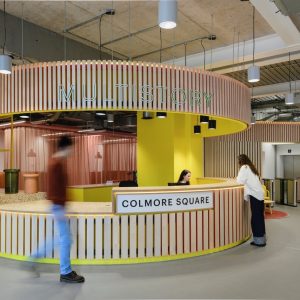Each year, the Serpentine Gallery invites an architect who has never completed a building in the UK to design and construct a temporary pavilion for the public to enjoy over the summer season. This is the 13th annual Serpentine Gallery pavilion, and at 41 years of age, Fujimoto has become the youngest architect to be selected for the commission.
Fujimoto and AECOM worked closely together to design and build a structure which will be structurally sound, utilises less amount of steel, and could be delivered in a short timescale. According to Fujimoto “I wanted to create a structure that was somewhere between architecture and nature, something like the primitive beginnings of a building.”
Designed to blend into its surrounding landscape, the 350 square metre pavilion is a cloud-like structure and is made from a latticed structure of 20mm steel poles forming a semi-transparent irregular ring. The structure is made of over 20,000 individual elements and 9,000 nodes compared to about 1,000 to 2,000 nodes found in an average building. The tubular steel frame and the integral poly-carbonate discs and seating elements are designed to work as a single element. The pavilion will have two entrances, a series of stepped terraces to provide seating, and a cafe.
Fujimoto has designed a translucent structure made of a series of modules. The design looks unique in an aspect that it is entirely structural in character with no traditional cladding. The structure makes use of poly-carbonate discs of 1.2m and 0.6m in diameter to provide protection from various natural elements. As light infiltrates the space, it changes its appearance, allowing the structure to create different experiences for visitors throughout the day.
Most of the elements have been manufactured off-site into transportable sections to limit the amount of time spent on-site. Over 56 modules of 800mm and 400mm grids were constructed offsite and assembled. The Serpentine Pavilion 2013 will be open to the public from 8 June till 20 October.
Fujimoto is the third Japanese architect to design the Serpentine pavilion, following Toyo Ito in 2002 and Sanaa in 2009.





